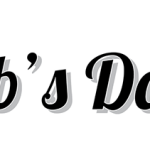The Lodge and Beehive in Freemasonry
In the third Degree we are taught about the Beehive as one of the ancient symbols of the Master Mason Degree that was passed down to us from our ancient Brethren and the mystery traditions from time immemorial. So, let’s take a moment to look into the greater meanings of the Beehive throughout various traditions and also its use as a Masonic symbol.
Brother David Harrison in his web article The Lost Symbols of Freemasonry: The Beehive, states that in the De antro nympharum, the Roman writer Porphyry describes that in the rites of Mithra honey was poured over an initiate during the Leo ritual while being admonished to avoid all that is unclean in the world.1 A joke could easily be made about avoiding sticky situations in life, but I digress.
The Greeks had many stories involving Bees and the God Zeus, most involving him controlling swarms of bees to send them after his foes or people who neglected to garner his favor. However one legend tells that when Zeus was a baby god he was fed honey either directly by bees or in other versions of the legend by a nymph named Melissa whose name means honey bee in Greek.2
The Vikings and Celtic tribes used Mead, a type of honey-wine in their celebrations and believed it was served to the warriors in the afterlife in Valhalla. The Scottish western isles have legends of what is referred to as “the secret knowledge of the bees,” meaning they thought the bees embodied ancient wisdom believed to come from the Druids. In the Scottish Highland and Island cultures people believed that when someone is asleep, in a trance, or when they die the soul leaves the body in the form of a bee, that belief is also theorized to have a Druidic origin.3
An inscription on a papyrus at the British Museum dated to 300BCE4 from the Egyptian mysteries is translated to read, “The god Re wept, and the tears from his eyes fell on the ground and turned into a bee. The bee made his honeycomb and busied himself with the flowers of every plant and so wax was made and also honey out of the tears of Re”.5 More recently pots of honey were discovered in a tomb in Egypt dating back three thousand years that were still edible due to a combination of nearly miraculous properties found in raw honey.6
India’s oldest sacred book, the Rig-Veda, compiled between 2,000 and 3,000BCE contains many mentions of bees and honey in Hindu rituals. The Hindu gods were often associated with bees; Vishnu, Krishnu, and Indra were called Madhava, meaning the nectar-born ones, and the symbol often used for them is the bee. It is also said that where Vishnu steps, a spring of mead appears.7
In our Oregon Masonic ritual, the Beehive is described in the lecture of the third degree as an emblem of Industry and recommends it as a virtue for all beings to aspire to. It educates us to be rational, intelligent and industrious, and admonishes us not to sit idle while our fellow creatures, or our Brethren, are in want when we are able to help.
Again thanks to Brother David Harrison’s research, the earliest known mention of the Beehive in relation to Freemasonry is discovered in the writings attributed to Johnathan Swift around the mid-1700s. “A Bee hath in all Ages and Nations, been the Grand Hieroglyphick of Masonry, because it excels all other living Creatures in the Contrivance and Commodiousness of its Habitation or Combe… What Modern Masons call a Lodge was for the above Reasons by Antiquity call’d a HIVE of Free Masons.”8
Brother Albert Mackey in his Encyclopedia of Freemasonry states, “When the Beehive is said to be an emblem of industry the word is not used in that sense, indeed, is used with an almost opposite meaning-for it is used in the sense of centuries ago, which was the true sense. Industry was the employment of a very large number of men, tens of thousands in many instances, on one undertaking at one place and at the same time, and they might or might not use machinery…. The Beehive is the perfect emblem, or typical instance of the power of industry, because what no one bee or succession of separate bees could accomplish is easy where hundreds of them work together at one task at one time.”9
Worshipful Brother George Washington was given an apron by Brother Lafayette that had a beehive painted on the flap within a circle of letters, which should be familiar to any Mark Master Mason, indicating that the beehive waslikelyselectedasWashington’sMarkuponcompletionofthatdegree.Thisseemstheperfect emblem for our Presidential Brother that he certainly earned with his industrious dedication to the beehive of our fledgling nation’s capital.9
Illustrious Grand Commander Brother Albert Pike said in Morals & Dogma, “A Masonic Lodge should resemble a bee-hive, in which all the members work together with ardor for the common good.”10
The industriousness, harmony and cooperation of the Hive is easily related to the ideal nature of a Lodge in operation, but other comparisons between the Beehive and Masonry have been drawn in the past to admonish an individual member with regard to their conduct.
In the bee-keeping community Drones are referred to as the “layabouts” in regard to their contribution and work for the hive, especially when compared to the diligent management of the worker bees. Although drones are believed to help cool the hive in the summer by flapping their wings, when the hive runs short of food in the fall the worker bees will starve the drones and escort them out of the hive to be left to die rather than having a lazy drone laying around to become just another mouth to feed while no longer contributing to the health and vitality of the hive.11
In relationship to Masonry, Brother Thomas Smith Webb’s Masonic Monitor, originally published in 1797, warns against being “deemed a drone in the hive of nature, a useless member of society, and unworthy of our protection as Masons.”
Thus like the industrious worker bee, the active Freemason at Lodge should not attend simply to drone on and on about problems without Bee-ing willing to lend a hand and his abilities in every way possible to work with his fellow industrious Brethren to improve and strengthen the Lodge and the Fraternity surrounding it. Like the hive, the Lodge has many different types of Officers and workers, and just like the hive there is plenty of work for all members who earnestly and honestly want to see their Lodge grow and thrive, producing the best honey or Masonic Light their Lodge or Temple can provide.
WBr. Nathan Neff, 32°, KCCH General Secretary, Portland Valley
Worshipful Master, The Research Lodge of Oregon No. 198 AF&AM of Oregon
- dr-david-harrison.com/freemasonry/the-lost-symbols-of-freemasonry-the-beehive/
- www.paleothea.com/Nymphs.html#Melissa
- chalicecentre.net/blog/what-the-druids-knew/
- www.historytoday.com/reviews/beekeeping-ancient-egypt
- www.pri.org/stories/2015-12-02/what-we-can-learn-ancient-egyptian-practice-beekeeping
- www.nationalgeographic.com.au/history/honey-in-the-pyramids.aspx
- www.planetbee.org/planet-bee-blog//the-sacred-bee-bees-in-ancient-india-and-china-7tmcx
- jonathanswiftarchive.org.uk/browse/year/text_12_23_2.html?page=d2e527
- Mackey, Albert C. (1894) An encyclopedia of freemasonry and its kindred sciences. Philadelphia, L. H. Everts
- Pike, Albert. (1947ed) Morals and Dogma of the Ancient and Accepted Scottish Rite of Freemasonry. Richmond, L. H. Jenkins, Inc.
- www.perfectbee.com/learn-about-bees/the-life-of-bees/role-of-the-drone-bee



